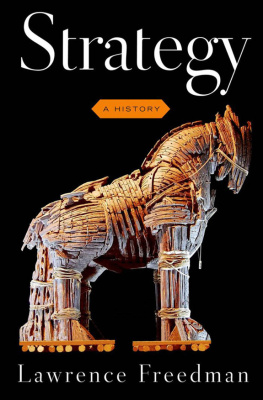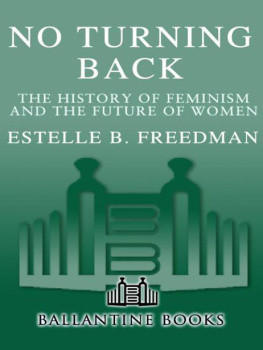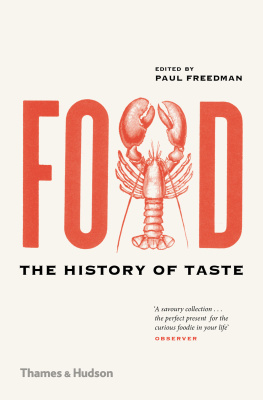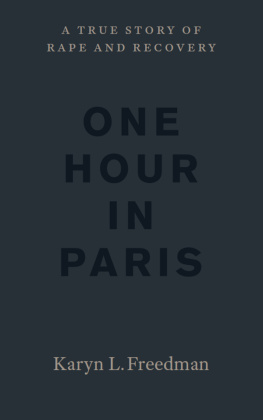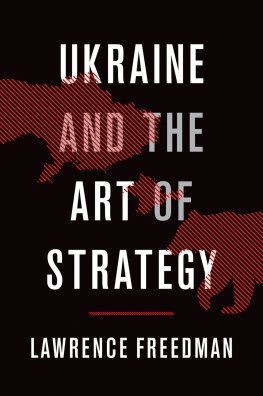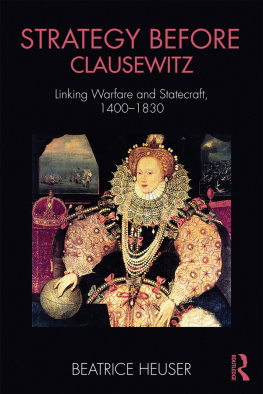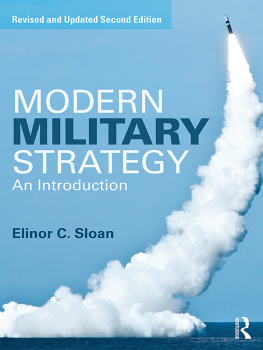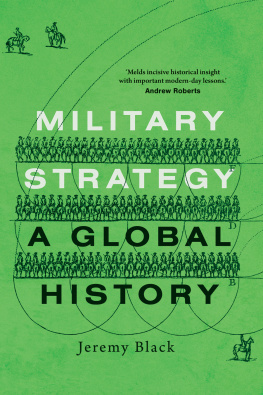T HE CONTRACT FOR this book is dated 1994. The original commission came from Tim Barton, and I appreciate his extraordinary patience as I busied myself with other projects and made a number of false starts on this one. Once it did get underway, he guided me to the capable hands of David McBride, who has been an extraordinarily supportive editor. It is thanks to him, Cammy Richelli, and the rest of the team at Oxford University Press that this book is making an appearance.
The project, however, would not have even been re-started had it not been for James Gows encouragement and seminar opportunities to develop my ideas. James, with Brad Robinson, pushed me into applying to the Research Councils UK under their Global Uncertainties program and helped me put together a successful submission. This joint ESRC/AHRC Fellowship provided me with space to research and write that would otherwise have been impossible. I was particularly fortunate in my coworkers on the grant. I have benefited from Jeff Michaelss own work on strategic ideas, as well as his sharp critiques of my own. While I was supposedly supervising Ben Wilkinsons thesis, he was in practice supervising meespecially when it came to the Classics.
The department of War Studies at Kings College London has been a stimulating home to me for over three decades. Conversations with staff and students inform many parts of this book. I have been grateful for the support of successive department heads: Brian Holden Reid, Christopher Dandeker, and Mervyn Frost. Other colleagues have also given me advice on the manuscript, notably Theo Farrell, Jan Willem Honig, and John Stone, who was a regular source of interesting references. Limor Simhony helped check my references, and Sarah Chukwudebe put in many corrections.
I have also benefited greatly from the advice of colleagues outside the department. Special mention must be made of two outstanding students of strategy, Beatrice Heuser and Bob Jervis, who provided detailed and meticulous annotations, far beyond the call of duty. Thanks for many useful comments are also due to Rob Ayson, Dick Betts, Stuart Croft, Pete Feaver, Azar Gat, Carl Levy, Albert Weale, and Nick Wheeler. Lastly, my son Sam was a source of good advice on structure and the title, and I was able to discuss the counterculture with my daughter-in-law Linda. I could mention many people with whom I have discussed the issues raised in this bookand a number of them appear in its pagesbut two deserve special mention. The first is my teacher and mentor, Sir Michael Howard, who set me on this course and still inspires me to continue. The second is Colin Gray. Our careers have run in parallel, with many shared themes. Though our views have often diverged, the encounters have always been rewarding.
In all my books I have thanked my wife Judith for her forbearance. Once again she has had to cope with my book daze, during which I am oblivious to everything around me other than the manuscript. It struck me, as we approach our ruby wedding, that it is about time I dedicated one of these books to her.
Man is descended from a hairy, tailed quadruped, probably arboreal in its habits.
Charles Darwin
I N THIS CHAPTER I argue that there are elemental features of human strategy that are common across time and space. These include deception and coalition formation, and the instrumental use of violence. These features are so elemental that traces of them can be found among chimpanzees. Chimps are self-aware, understand others well enough to deceive them, and show gratitude or retribution according to whether they have been given or denied support. They have forms of communication, think through difficult problems, and plan ahead.
Years of careful observation of chimpanzees, first in the wild and then in special colonies at zoos, challenged the previous view that their social bonds were limited. It became apparent that individual chimps in the same area came together regularly and developed complex relations. They not only worked together but also had fights. Of particular interest for students of strategy, chimpanzees were political in their behavior. They built up coalitions, offering grooming, sex, and food to potential supportersall in order to prevail in conflicts. But they also appreciated the importance of limiting their conflicts so that they could live cooperatively thereafter. They kissed
During the 1970s, Frans de Waal observed the chimpanzee colony at Arnhem Zoo, making copious notes as a remarkable series of dramas began to unfold. In his 1982 book, Chimpanzee Politics, he drew some startling conclusions about the complexity of chimpanzee society. In his view, the evidence of coalition formation and power struggles among the chimps deserved the label political.
Raw strength could only take chimps so far. When dominant males asserted power, their hair stood on end to make them appear larger and more ferocious than they actually were. They charged at groups of subordinate apeswho immediately scatteredand then received due respect through some submissive greeting or by being groomed in an elaborate fashion. De Waal realized, however, that as the hierarchy changed, those gaining power were not necessarily the strongest. Social maneuvers were of even greater importance as other chimpanzees joined in on one side or the other and shifted their allegiances. Changes in the hierarchy were not abrupt, but orderly.
The first change charted by de Waal began with the established dominant male, Yeroen, initially enjoying the support of most of the females but appearing unsure of how to respond to a conspicuous challenge to his authority by another male, Luit. In a definite affront, Luit mated with a female right in front of Yeroen. Then Luit got another male, Nikkie, to join him to tilt the balance of power in his favor. During the course of the power struggles, the tactics deployed involved not only displays of strength and determination but also measures designed to encourage females to defect, such as grooming them and playing with their children. Yeroens angry tantrums, which might once have made subordinates wary of defecting, gradually lost their impact as they became more frequent. He eventually gave up. This struggle led to another. With Luit now dominant, Yeroen was prepared to work with Nikkie to regain some of his past prestige, even though he would not become dominant again.
Actual fighting played only a small part in this process. Biting, the most dangerous act of aggression, was rarely used. De Waal concluded that rather than changing the social relationships, the fights tended to reflect the changes that had already taken place. The apes appeared to know that they should limit violence among themselves, for they might have to unite against external rivals. They also seemed to understand the need for mediation and reconciliation. Once a goal had been achieved, the patterns of behavior changedfor example, both the winners and losers became less aggressive.
Deception also turned out to be a vital strategic quality. It involved deliberately sending untrue signals with a view to changing anothers behavior. Apes tricked other members of their group out of food or sneaked off for some furtive courtship when alpha males were not paying attention. Again, this required a degree of empathy with other apes. It was necessary to understand the normal behavior of others if only to appreciate how they might be misled.
What we might call strategic intelligence, for both chimps and humans, evolved through interactions in a complex social environment as much as from the demands of survival in a harsh physical environment. Consider the human brain. The brain consumes 20 percent of the bodys energy, far more than any other organ, while making up only 2 percent of an adults body weight. Something so costly to maintain must have developed to meet a vital need. Richard Byrne and Nadia Corp studied eighteen species from all the major branches of primates and correlated the size of the neocortex to the amount of deception the species practiced. They established a link between the size of the brains and general social intelligence, including the ability to work together and manage conflict, as well as trickery.

